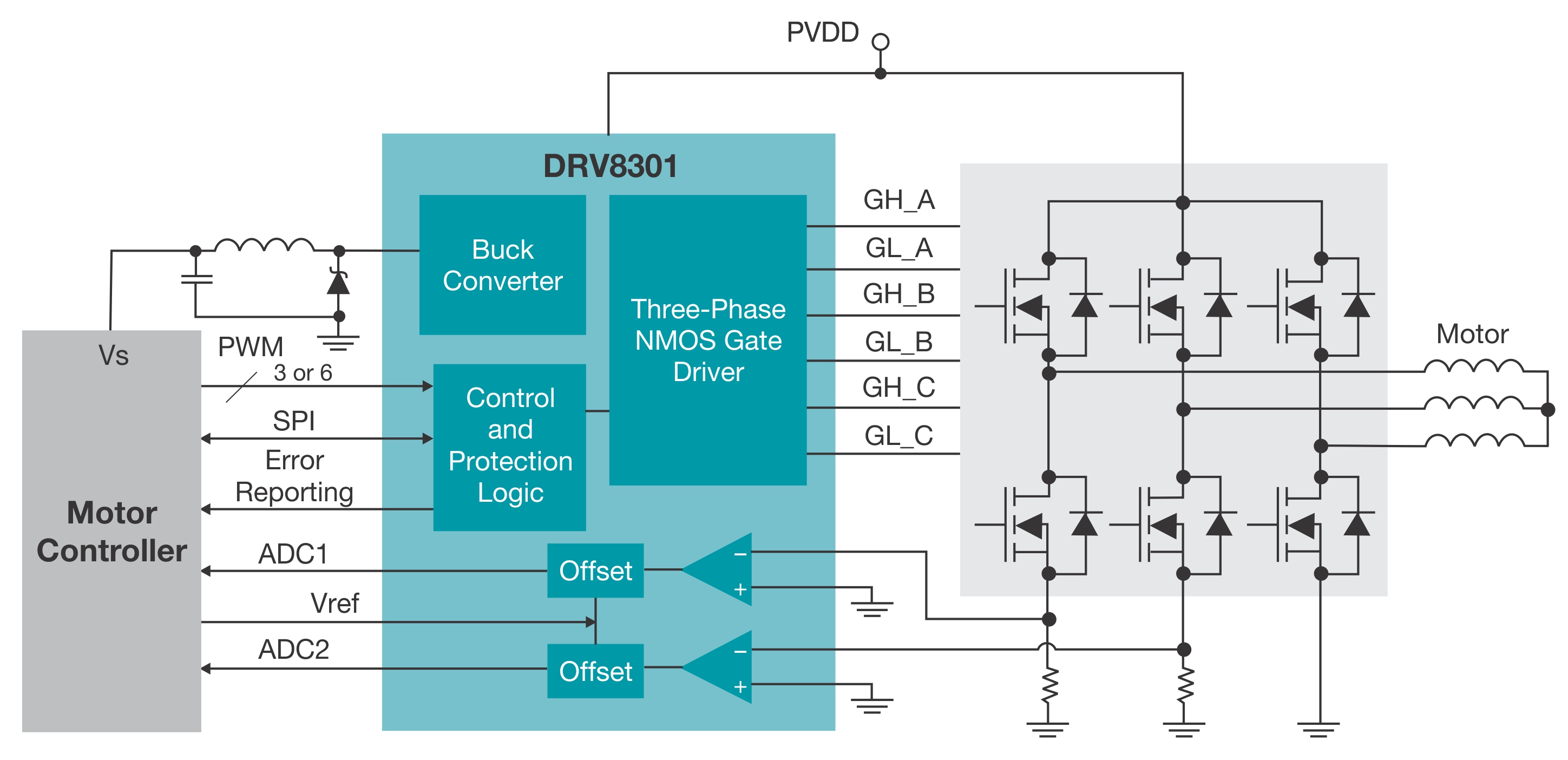Getting started in sensorless field-oriented control
How sensorless field-oriented control can offer precise torque-based control and high speed, without a costly, error-prone position sensor. By Michael Seidl, Business Development Manager, Texas Instruments.
The development of field-oriented control (FOC) means motors can be operated at their optimum torque and ideal speed at any time. Complementing these benefits, the highly responsive speed control enabled by FOC lends itself to applications that experience frequent dynamic load changes, including compressors, ventilators, pumps or direct drives used in vehicles, elevators, air conditioning systems or electric vehicles. As an additional advantage, the reduced torque variations achieved with FOC result in a smoother motor operation, leading to less noise and reduced bearing wear.
Among the disadvantages of the FOC approach is the requirement for a position sensor. FOC relies on a mechanical or software-based sensor (observer) to precisely determine the rotor position. This is necessary for exerting the maximum torque by generating a suitable magnetic field in the stator. Sensors and observers result in additional costs and an increased error rate. The InstaSPIN-FOC technology developed by Texas Instruments intends to minimise the disadvantages of the sensorless approach. For this purpose, TI has combined InstaSPIN-FOC with the FAST (Flux – Angle – Speed – Torque) software sensor and the C2000 Piccolo microcontrollers (MCUs). The InstaSPIN-FOC LaunchPad enables the design of control solutions for three-phase AC motors operated at voltages of 6-24V and currents of 0-10A. Such drives are used in pumps and ventilators for medical applications and vehicles. Additional applications include e-bikes and motors used for model making.
The LaunchPad can also be used for more powerful motors to make an informed decision whether the sensorless FOC approach is suitable for the application, enabling designers to use it for an initial evaluation, while evaluation modules are available for subsequent development work, especially in high-voltage applications.
Launching
The compact LaunchXL-F28027F LaunchPad includes a C2000 Piccolo MCU featuring a 13-channel, 12-bit ADC with a sampling frequency of 4.6MHz and four high-resolution PWM modules (pulse-width modulation). Supporting clock frequencies up to 60MHz, the CPU can access 6KB of RAM and 64KB of on-chip flash memory. Additional features include a Serial Peripheral Interface (SPI), an Inter-Integrated-Circuit Interface (I²C) and a UART (Universal Asynchronous Receiver Transmitter). Applications designed based on the Piccolo F28027F can also be ported to lower-cost versions of the F2802x MCU family. The LaunchPad also provides a JTAG real-time emulation tool. A USB interface is available to connect the LaunchXL-F28027F to a PC or additional TI LaunchPads, and designers can use PCs for programming, debugging and evaluating applications. The USB interface also provides a serial UART link between the MCU and the host computer.
The InstaSPIN-FOC software including the FAST software sensor is pre-installed in the MCU’s ROM. No additional costs result from the software. Furthermore, TI provides motor-control libraries (modules, drivers, reference systems, documentation) for designing and evaluating with MotorWare. As the second component of the development kit, the BoostXL-DRV8301 Motor Drive BoosterPack was specifically adapted to the requirements of InstaSPIN-FOC. The BoosterPack includes the DRV8301 gate-driver IC providing three half-bridge drivers for brushless three-phase motors. The configuration supports three or six PWM inputs, respectively (see image below).

The BoostXL-DRV8301 BoosterPack for sensorless solutions
The DRV8301 is rated for supply voltages of 6.0-60V. It can drive external MOSFETs with up to 1.7 (source) or 2.43A (sink). Using its internal operational amplifiers, the device can make bi-directional current measurements in two motor phases. In addition, the on-chip buck controller can convert the intermediate circuit voltage (6.0V-60V) into a configurable output voltage (with currents up to 1.5A).
Apart from the DRV8301 IC, the BoosterPack includes NexFET MOSFETs from TI. Enabling two-sided heat dissipation, NexFET devices feature an 80% improvement of the heat-transport characteristics. Furthermore, current density is improved by 50% in the standard package. In the BoostXL-DRV8301 BoosterPack, TI is using a 6xN-channel NexFET MOSFET from the CSD18533Q5A series featuring a 5x6mm SON (Silicon on Nothing) plastic package. The IC’s RDS(on) is less than 6.5Ohms. 10A are available at the BoosterPack’s U, V and W outputs in order to support high-power applications.
TI has designed the InstaSPIN-FOC LaunchPad and the Motor Drive BoosterPack primarily for small-scale engineering companies wishing to get acquainted with sensorless FOC and for designers working on products based on this approach. Furthermore, universities, vocational schools and training companies can use the InstaSPIN-FOC LaunchPad as a simple and low-cost means to familiarise apprentices and students with a motor-control technology which will gain importance in many applications in the years to come.








